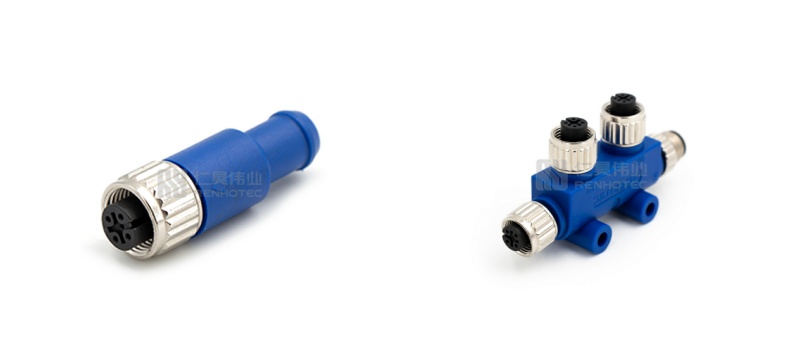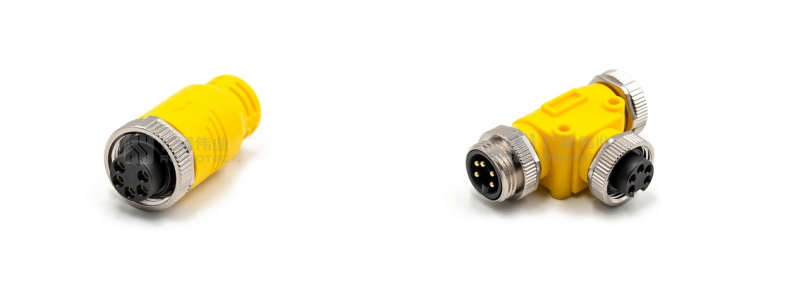In the intricate realm of marine electronics, NMEA 2000 connectors serve as the essential bridges that enable seamless communication between a wide array of devices on board a vessel. The NMEA2000 standard, established by the National Marine Electronics Association, provides a unified and standardized approach to connecting different marine electronic devices. NMEA 2000 connectors are designed to adhere to this standard, acting as the physical interface that enables the interconnection of a wide range of equipment, from navigation systems and engine monitors to weather stations and autopilots.
Understanding the different types of NMEA 2000 connectors is crucial for boat owners, marine technicians, and enthusiasts alike, as it directly impacts the functionality, reliability, and compatibility of the marine electronic ecosystem. Let’s embark on a detailed exploration of the various classifications of NMEA 2000 connectors.
Connector Type and Form Factor
Micro-C Connectors (M12 Connector)
Micro-C connectors are among the most popular choices for NMEA2000 applications due to their compact size and versatility. These connectors are designed to save space, making them ideal for installations where real estate is at a premium, such as in smaller boats or within densely packed electronic panels. They typically feature a secure locking mechanism that ensures a stable connection, even in the face of the vibrations and jolts commonly experienced on the water. Micro-C connectors often come with multiple pins, carefully arranged to accommodate the data and power requirements of NMEA2000 devices. Their small footprint doesn’t compromise on performance, allowing for reliable high-speed data transfer between connected equipment, like navigation displays and sensors.

Mini Connectors (7/8″ Connector)
Mini connectors offer a balance between size and robustness. Slightly larger than Micro-C connectors, they can handle higher power loads and may have a greater number of pins, enabling them to support more complex device connections. Mini connectors are well – suited for applications where a bit more durability and capacity are needed, such as in larger vessels with extensive electronic systems or in engine room installations where they might be exposed to harsher conditions. Their robust construction helps withstand the rigors of the marine environment, including exposure to saltwater and temperature fluctuations, while still maintaining a reliable connection for critical data communication.

Specification Comparison: Micro-C vs Mini Connectors
| Specification | Micro-C | Mini Connectors |
| Connector Type | M12 5Pin Connector | 7/8″-16UNF 5P |
| Rated Current | 4A | 8A |
| Rated Voltage: | 60V AC/DC | 300V AC/DC |
| Contact Resistance: | ≤5mΩ | ≤5mΩ |
| Insulation Resistance: | ≥100MΩ | ≥100MΩ |
| Typical Use Cases | Low-power devices (sensors, small displays) | Higher-power devices (MFDs, autopilots) |
See our full range of NMEA2000 Micro-C connectors and Mini connectors to match your installation needs.
The Advantages of NMEA 2000 Connectors
Standardized Design
One of the primary advantages of NMEA 2000 connectors is their standardized design. This standardization ensures that any device equipped with an NMEA 2000 – compliant connector can communicate with other compatible devices without the need for complex and time – consuming custom configurations. For example, a new sonar system can be easily integrated into an existing NMEA2000 network on a boat simply by plugging it in with the appropriate connector. This plug – and – play functionality significantly reduces installation time and complexity, making it accessible for both professional installers and boat owners looking to upgrade their systems.
Reliable Performance
The reliability of NMEA 2000 connectors is another key factor contributing to their importance in marine communication. These connectors are engineered to withstand the harsh marine environment, which is characterized by constant exposure to saltwater, humidity, vibrations, and temperature fluctuations. They are typically built with high – quality materials and robust construction, such as corrosion – resistant metals and durable plastics, to ensure long – term performance and resistance to wear and tear. Additionally, NMEA 2000 connectors often feature secure locking mechanisms that prevent accidental disconnections, even in rough seas or during periods of heavy vibration.
Accurate and Stable Data Transmission
NMEA 2000 connectors play a vital role in facilitating accurate and stable data transmission between marine electronic devices. They use a multi-drop network architecture, where multiple devices are connected to a single NMEA2000 backbone cable using branch cables and connectors. This setup allows for efficient data sharing, as all devices on the network can communicate with each other simultaneously.
The standardized data format and communication protocol of NMEA2000 ensure that data is transmitted in a consistent and understandable manner. Each device on the network is assigned a unique address, and data packets are labeled with the source and destination addresses, as well as information about the type of data being transmitted. This clear structure enables devices to quickly and accurately interpret the incoming data, reducing the risk of errors or misunderstandings.
Support High-Speed Data Transfer Rates
Moreover, NMEA 2000 connectors support high – speed data transfer rates, which are essential for applications that require real – time data, such as navigation and engine monitoring. The ability to transmit data quickly and without loss or delay is crucial for making informed decisions on the water. For instance, in a critical navigation situation, up – to – date information from GPS receivers, radar systems, and chartplotters needs to be available instantaneously to avoid hazards.

NMEA 2000 Connectors: Your Marine Connectivity Partner
Selecting high-quality and compatible NMEA2000 connectors — or a complete NMEA2000 starter kit — is of utmost importance for enhancing the overall performance and safety of marine electronic equipment. A reliable connector ensures that all devices on the network can communicate effectively, providing boat owners and operators with accurate and timely information. This, in turn, improves navigation accuracy, enables better engine management, and enhances the functionality of safety – critical systems, such as emergency beacons and collision avoidance devices.
In conclusion, NMEA 2000 connectors are the unsung heroes of marine electronic communication. Their standardized design, reliability, and ability to ensure accurate and stable data transmission make them indispensable for modern vessels. By understanding the importance of these connectors and choosing the right ones for your marine electronic systems, you can significantly enhance the performance, safety, and reliability of your boat, ensuring smooth sailing in all conditions.
Boost your vessel’s performance and safety with high-quality NMEA 2000 connectors from Renhotec. Explore our full range of marine connectors and contact us at [email protected] to upgrade your connectivity now.
Related Blogs:
How to Choose the Right NMEA 2000 Connector?
NMEA 2000 Difference Between Trunk and Branch Cables Explained
Which NMEA 2000 Products Work with Low Impedance Marine Equipment?

